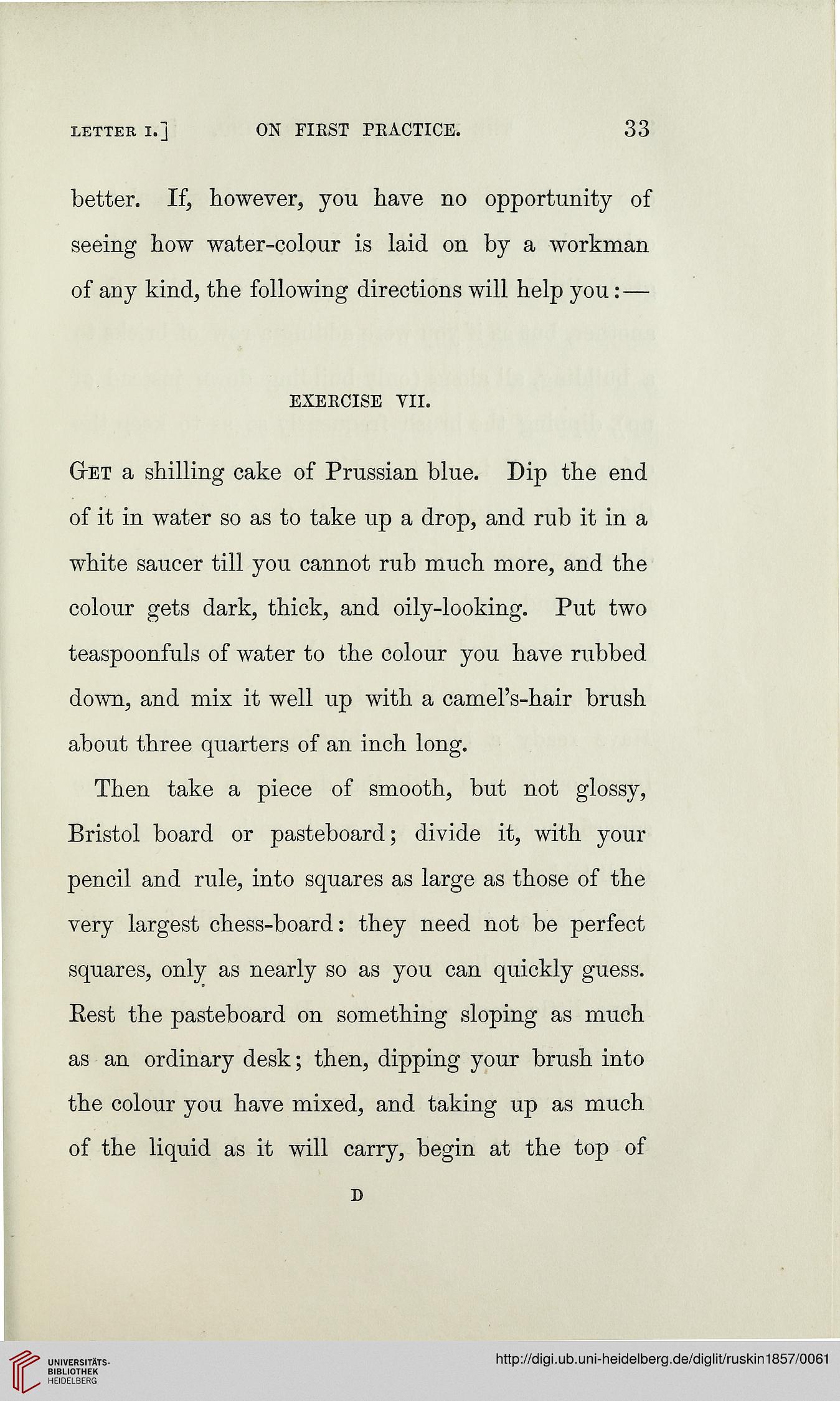LETTER I.J
on first practice.
33
better. If, however, you have no opportunity of
seeing how water-colour is laid on by a workman
of any kind, the following directions will help you:—
exercise vii.
(xet a shilling cake of Prussian blue. Dip the end
of it in water so as to take up a drop, and rub it in a
white saucer till you cannot rub much more, and the
colour gets dark, thick, and oily-looking. Put two
teaspoonfuls of water to the colour you have rubbed
down, and mix it well up with a camel's-hair brush
about three quarters of an inch long.
Then take a piece of smooth, but not glossy,
Bristol board or pasteboard; divide it, with your
pencil and rule, into squares as large as those of the
very largest chess-board: they need not be perfect
squares, only as nearly so as you can quickly guess.
Eest the pasteboard on something sloping as much
as an ordinary desk; then, dipping your brush into
the colour you have mixed, and taking up as much
of the liquid as it will carry, begin at the top of
d
on first practice.
33
better. If, however, you have no opportunity of
seeing how water-colour is laid on by a workman
of any kind, the following directions will help you:—
exercise vii.
(xet a shilling cake of Prussian blue. Dip the end
of it in water so as to take up a drop, and rub it in a
white saucer till you cannot rub much more, and the
colour gets dark, thick, and oily-looking. Put two
teaspoonfuls of water to the colour you have rubbed
down, and mix it well up with a camel's-hair brush
about three quarters of an inch long.
Then take a piece of smooth, but not glossy,
Bristol board or pasteboard; divide it, with your
pencil and rule, into squares as large as those of the
very largest chess-board: they need not be perfect
squares, only as nearly so as you can quickly guess.
Eest the pasteboard on something sloping as much
as an ordinary desk; then, dipping your brush into
the colour you have mixed, and taking up as much
of the liquid as it will carry, begin at the top of
d




